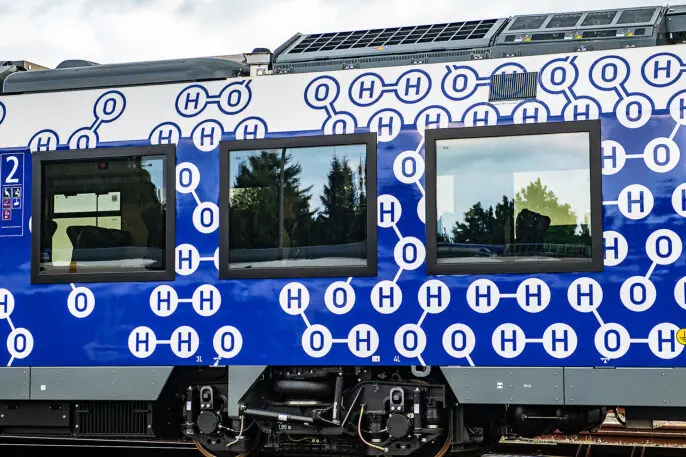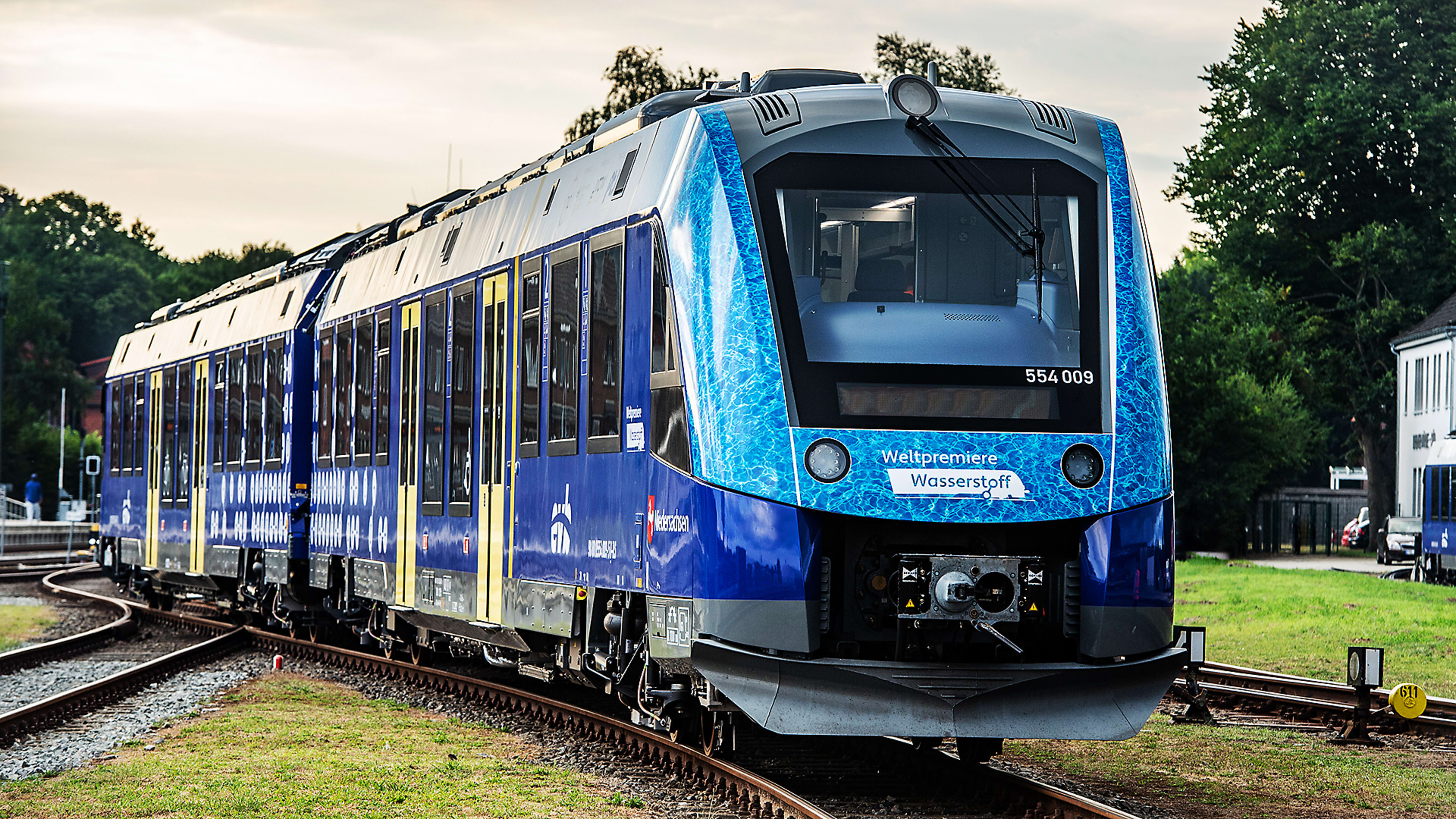Sitting inside a diesel train, you can be exposed to more pollution than if you were standing next to a busy street at rush hour. The trains are still common—especially in the U.S. But in Germany, one small train line that used to run on diesel is moving to 100% hydrogen.
Inside fuel cells, hydrogen stored on the roof of the train combines with oxygen to make power. The process emits only water vapor.
“It’s less noisy,” says Bruno Marguet from Alstom, the France-based company that designed and made the trains for LNVG, the German regional rail company that operates the trains. “You don’t smell the diesel smoke when you’re in the station . . . there aren’t diesel emissions from [nitrogen oxides], which are harmful for health.”
Without CO2 emissions from the smokestack, it’s also better for the climate. Right now, some of the hydrogen supplying the line is made with fossil fuels, but the train operator plans to work with partners to produce the hydrogen with local wind power instead.
Around half of Europe’s train lines have been electrified, and can use electric trains. But on lines that aren’t used as often, adding overhead electric wires can be too expensive. Hydrogen trains can also go farther before needing to refuel than a battery-electric train can go on one charge; Alstom’s trains go 1,000 kilometers, or 621 miles, before the hydrogen tanks need to be refilled. On LNVG’s regional route between smaller towns, the trains can run all day without refueling.

The new route, between the towns of Cuxhaven, Bremerhaven, Bremervörde and Buxtehude, is the first in the world that will run fully on hydrogen. (Alstom is also the first company to produce this type of train, though Siemens tested a prototype hydrogen train earlier this year and plans to launch it by 2024.) The LNVG line is currently operating five of the new trains; nine more will soon be added as the diesel trains are phased out.
Alstom is also building hydrogen trains for another line in Germany, along with others in Italy and France. The company is also in talks to potentially bring some of the trains to North America. The challenge isn’t technological, but political. “You need to have a strong push from the political side and from the environmental lobby,” Marguet says.
Recognize your brand’s excellence by applying to this year’s Brands That Matter Awards before the early-rate deadline, May 3.
